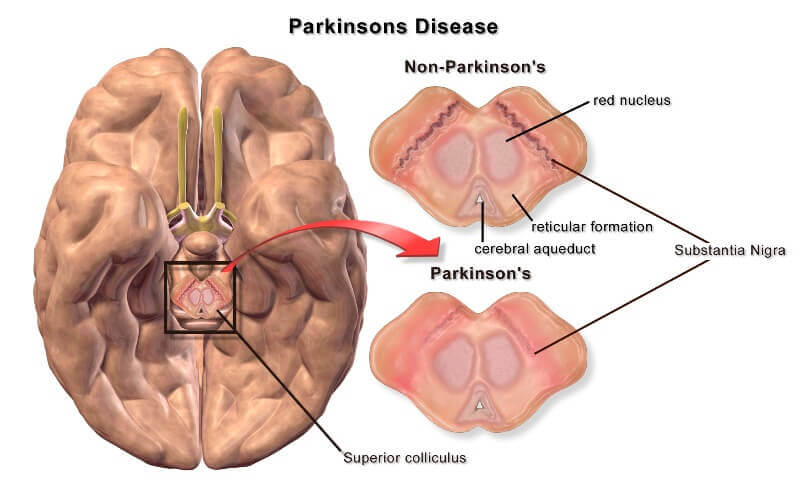A nurse is caring for a client who is newly diagnosed with Parkinson’s disease. The client states, “I have no idea why I got this.” Which of the following is the most important question the nurse should ask this client while performing the assessment?
“When did you have your last physical?”
“Do you have any family members with Parkinson’s disease?”
“What kind of work do you do?”
“How much coffee do you drink every day?”
The Correct Answer is B
Choice A Reason:
Asking about the last physical exam is important for understanding the client’s overall health history, but it is not the most critical question for assessing the risk factors specific to Parkinson’s disease.
Choice B Reason:
This is the correct answer. Family history is a significant risk factor for Parkinson’s disease. Genetic factors can play a role in the development of the disease, and knowing if any family members have Parkinson’s can help in understanding the client’s risk and planning appropriate care.
Choice C Reason:
While occupational history can provide insights into potential environmental exposures that might contribute to Parkinson’s disease, it is not as directly relevant as family history in assessing the risk of developing the disease.
Choice D Reason:
The amount of coffee consumed daily is not directly related to the risk of developing Parkinson’s disease. Some studies suggest that caffeine might have a protective effect, but this is not a primary factor in assessing the disease.

Nursing Test Bank
Naxlex Comprehensive Predictor Exams
Related Questions
Correct Answer is ["A","B","D"]
Explanation
Choice A Reason: Pupillary dilation
Pupillary dilation can be a sign of increased intracranial pressure or brain injury, which are potential complications following a motor vehicle accident with a loss of consciousness. Assessing for changes in pupil size and reactivity is crucial in identifying neurological impairments that may require immediate intervention.
Choice B Reason: Persistent headache
A persistent headache is a common symptom following a traumatic brain injury (TBI) or concussion. It can indicate ongoing issues such as intracranial bleeding or increased intracranial pressure. Monitoring the severity and duration of the headache is important for determining the need for further medical evaluation and treatment.
Choice C Reason: Presence of hand tremors
Hand tremors are not typically associated with acute brain injuries resulting from a motor vehicle accident. They are more commonly linked to conditions such as Parkinson’s disease, essential tremor, or other neurological disorders. While tremors should be noted, they are not a primary concern in the context of post-accident assessment.
Choice D Reason: Difficulty waking
Difficulty waking, or altered level of consciousness, is a significant indicator of potential brain injury or increased intracranial pressure. It is essential to monitor the client’s level of consciousness closely, as changes can signal worsening neurological status and the need for urgent medical intervention.
Choice E Reason: Foot drop
Foot drop is a condition characterized by difficulty lifting the front part of the foot, often due to nerve damage or muscle weakness. While it can occur in the context of neurological injury, it is not a primary manifestation to assess for immediately following a motor vehicle accident with a loss of consciousness. The focus should be on more acute signs of brain injury.
Correct Answer is D
Explanation
Choice A Reason:
A healthy stoma should be pink or red, not purple. A purple stoma could indicate compromised blood flow and requires immediate medical attention.
Choice B Reason:
A sigmoid colostomy typically produces formed stool because it is located in the lower part of the colon, where water absorption occurs.
Choice C Reason:
The stoma itself should not be painful after the procedure. Pain may indicate complications such as infection or improper stoma care.
Choice D Reason:
This is the correct answer. A sigmoid colostomy is usually located in the left lower abdomen, as this is where the sigmoid colon is situated.
Whether you are a student looking to ace your exams or a practicing nurse seeking to enhance your expertise , our nursing education contents will empower you with the confidence and competence to make a difference in the lives of patients and become a respected leader in the healthcare field.
Visit Naxlex, invest in your future and unlock endless possibilities with our unparalleled nursing education contents today
Report Wrong Answer on the Current Question
Do you disagree with the answer? If yes, what is your expected answer? Explain.
Kindly be descriptive with the issue you are facing.
